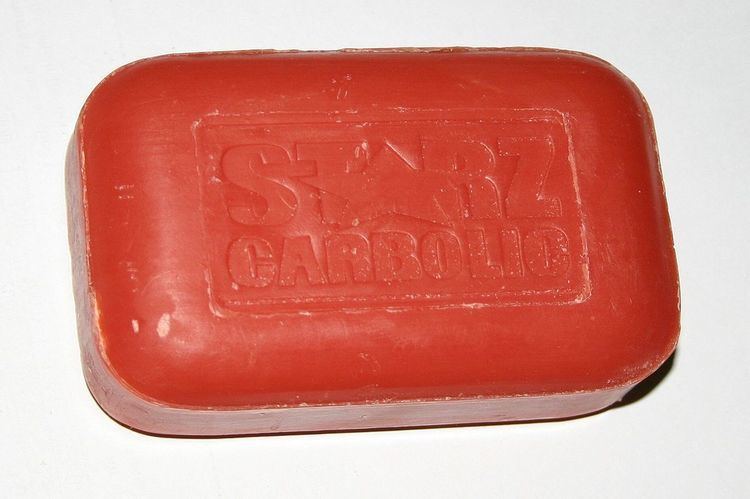 | ||
Carbolic soap is a mildly antiseptic soap containing carbolic acid and/or cresylic acid, both of which are phenols derived from either coal tar or petroleum sources.
In 1834, German analytical chemist Friedlieb Ferdinand Runge discovered a phenol, now known as carbolic acid, which he derived in an impure form from coal tar.
In August 1865, Dr. Joseph Lister, 1st Baron Lister applied a piece of lint dipped in carbolic acid solution onto the wound of an eleven-year-old boy at Glasgow Royal Infirmary, who had sustained a compound fracture after a cart wheel had passed over his leg. After four days, he renewed the pad and discovered that no infection had developed, and after a total of six weeks he was amazed to discover that the boy's bones had fused back together, without the danger of suppuration.
In 1894, William Lever, 1st Viscount Leverhulme introduced the first mass-produced carbolic soap to the market, Lifebuoy.
One of the distinctive features of this soap is its deep pink to red color, which is caused by the carbolic acid. Carbolic acid is actually used in a wide range of industrial and consumer product applications and can be a skin irritant. Some people who use a great deal of carbolic soap might find that their skin becomes irritated as a result of prolonged contact. This is one of the reasons carbolic soap has been displaced in hospitals by more gentle disinfectant skin cleansers.
By killing bacteria, it also acts as a mild deodorant when used as a body soap. It is still distributed to disaster victims for routine hygiene by the Red Cross and other relief organizations. Remembered by generations of people from the 1920s-1970s era as the household soap of their childhood, it is still sought after by some for its nostalgic strong, tar-like scent.
In Great Britain it was used in state schools at least up until the late 1980s.
In the 1960s school teachers in the United Kingdom were allowed to use corporal punishment in the classroom, so along with the cane, a child who cursed in class might be made to wash out their mouths with carbolic soap.
Carbolic soap is still used regularly in the Caribbean region, especially Jamaica, where it can be found in most drugstores and supermarkets.
